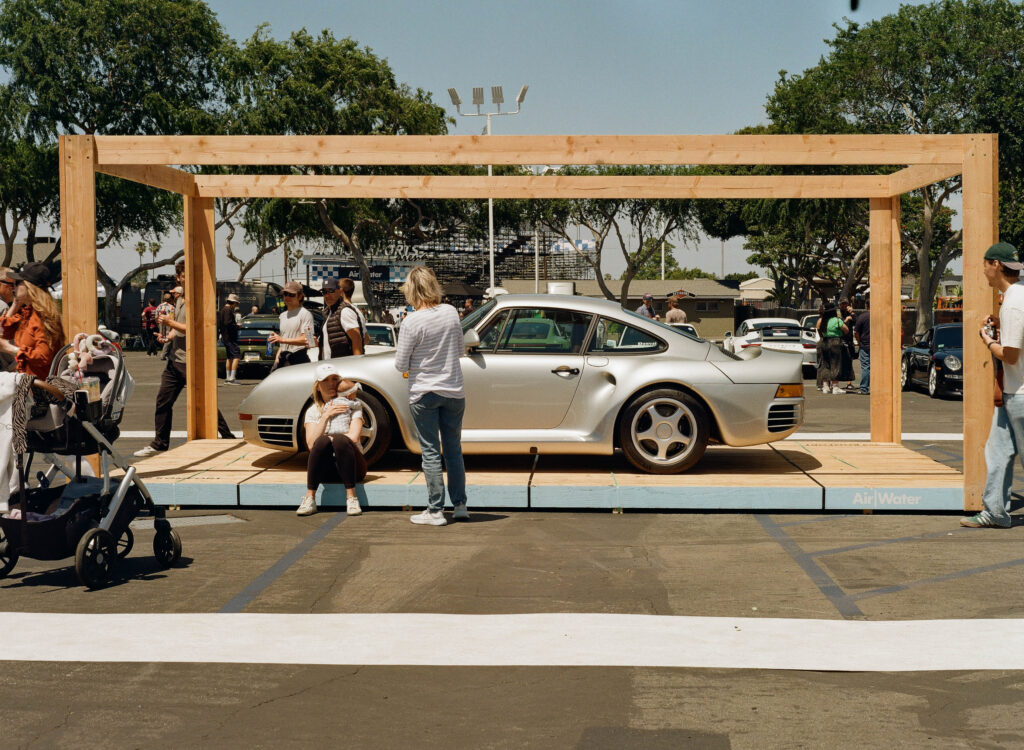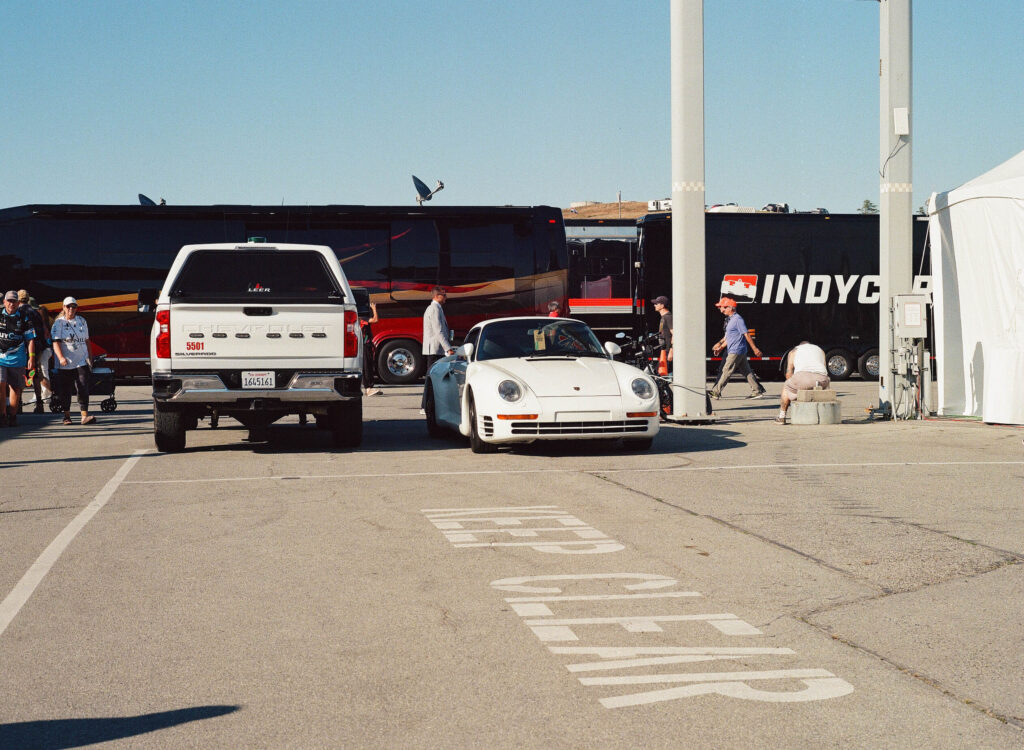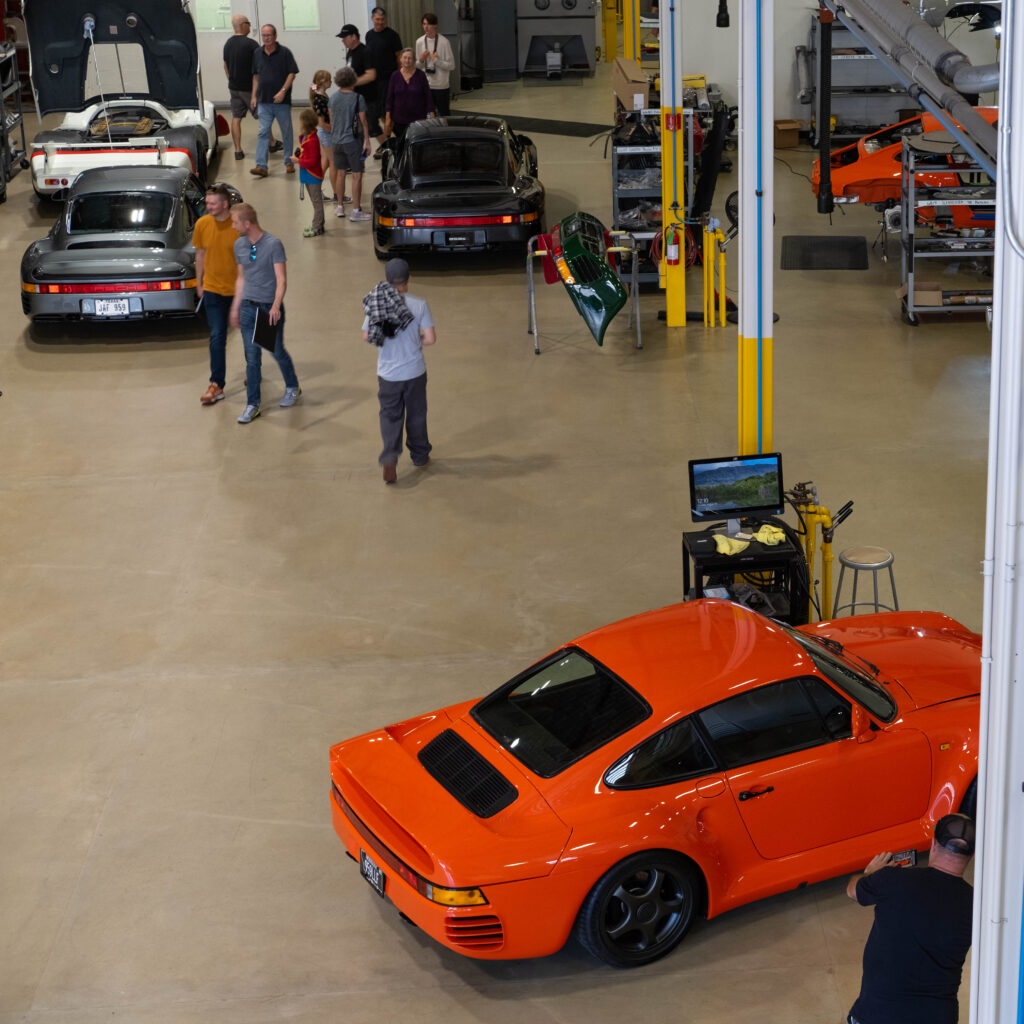Here we are again covering a Group B intended vehicle. I thought that delaying a post of the 959 would have been a missed opportunity. Since we have the momentum of the Ferrari F40 going from the last post. Here is a vintage supercar that was an instant classic.

The Genesis
The Porsche 959 was, again, intended for Group B. Just like the ancestor of its competitor, the Ferrari F40. The car arrived too late and it never saw the light of Group B. Porsche had appointed Peter Schutz as new Managing Director. Chief of Engineering Helmuth Bott proposed pushing the 911 platform to unprecedented heights.
The idea was to create not just a Supercar but a vehicle that displayed a new level of technological advancements and Porsche’s Engineering.
Development and Innovation
The 959 is a showcase of engineering advancements.
- Advanced All-Wheel Drive: The PSK (Porsche-Steuer Kupplung) system helped the car adapt and change torque distribution between front and rear wheels.
- Computer controlled Twin-Turbocharged Engine: The 959 was powered by a 2.85-liter flat-six engine featuring sequential turbochargers. This helped reduce the lag produced by only one turbo and improve responsiveness.
- Adjustable Suspension: An electronically controlled system that could change the ride height and damping according to the situation.
- Aerodynamic Design: Porsche performed an extensive wind tunnel testing resulted in a car body with a drag coefficient of just 0.31. Just to put it in perspective, current vehicles average between 0.25 to 0.3. Now, 0.31 in the 80’s is crazy.
- Lightweight Construction: Porsche used different materials for the 959. Like Kevlar and aluminum to reduce weight while maintaining structural rigidity.

Concept to Reality
First shown during the 1983 Frankfurt Auto Show. The Porsche 959 was definitely a hit but it came with its number of hurdles.
Challenges
A lot of challenges were faced by Porsche. Some of the same technological advancements had challenges of their own. Mainly because they were developing this car technology from the ground up.
Production and Cost Issues
- Budget Overruns: The target price of the 959 was supposed to be DM150,000. This price quickly increased to DM420,000 by the time of production.
- Production Losses: Porsche lost money on every 959 it sold. Each car was estimated to cost $500,000 to build. The problem was that they were sold for $225,000.
- Outsourced Production: The 959 was a complex vehicle to build. Porsche had to outsource its body production. The 959 was produced at Karosserie Baur rather than Porsche’s own factory. Add to that that the engine was made at Porsche’s facilities. A big puzzle to solve.
Time Constraints and Delays
- Missed Deadlines: The original timeline for homologation in early 1985 was pushed back due to development challenges.
- Group B Timing: Delays in development meant the 959 missed its opportunity to fully compete in Group B rally racing, which was eventually discontinued.
Regulatory Hurdles
Not even Bill Gates could import the 959 to the US. The design was not affected by US regulations but the importation ability did.
- U.S. Market Exclusion: Porsche’s refusal to crash test the 959 for U.S. DOT approval meant the car couldn’t be sold in the American market, a significant setback. Mainly because Porsche could not justify the cost of this. The loss was already huge by Porsche.
- Emissions Compliance: Making the 959 emissions-legal in various markets, particularly the U.S., proved to be a long-term challenge.

Racing Success
We know that the 959 was initially developed for Group B. Unfortunate that, just like the 288 GTO, never made its debut. Fortunately for Porsche, they created a car that was multipurpose. The 959 got a huge win during the 1986 Dakar Rally, where it claimed first place.
Up until 1987 the 959 was the top dog. This car was the top of the top. 197 mph as its speed limit and reaching 0 to 60 in 3.7 seconds. Dethroned by the one and only Ferrari F40.
Legacy and Influence
The 959 had a huge impact on Porsche moving forward. The development of its AWD system made it possible for the 911 Turbo to adopt the tech. The advanced turbocharging system did the same. Added versatility to the Supercar world. Take it to the track or the grocery store.
The technology added to the vehicle, the electronics used, predicted what was coming. More electronic controls in vehicles. The AWD also made it possible for Porsche to have SUVs nowadays. Added value to the Cayenne. Making the car successful and helping the company move forward.
The 959 definitely pushed Porsche’s boundaries as an automaker. It also contributed to the company’s future in ways that they probably never thought it would. The 80’s were definitely revolutionary. It is nice to reminisce on what was, but what similarities do you find with the current times in the automotive world? Do you think the 959’s influence can still be seen in modern supercars? Share your thoughts below!
Thanks for stopping by,
DL
Discover more from 3DLANES
Subscribe to get the latest posts sent to your email.
